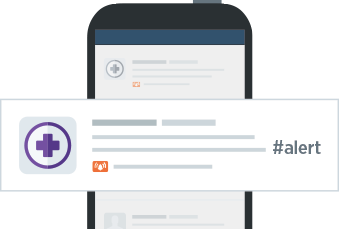
Last week Twitter introduced an alert system that they described as “ a new feature that brings us one step closer to helping users get important and accurate information during emergencies, natural disasters or when other communications services aren’t accessible.” The alerts show up on users phones as special push notifications and SMS notifications and are marked with an orange bell in your feed. At first blush it seems like a great idea but, given that I’m writing this during yet another government “shutdown”, are governments and NGOs really the only organizations that should get access to this useful service? What can activists do to push back?
A government’s priorities are never quite as stark and apparent as when the free flow of money abruptly stops. These are the moments when cash stockpiles are revealed, and we see which purse strings have the most slack. According to Al Jazeera America, these are just a few services that are still running uninterrupted:
- Tax collection (although no IRS agents to help answer questions)
- Homeland security employees and agents
- All 1.4 million active-duty military personnel will be paid and about half of private mercenaries (err… “contractors”)
- All 116 federal prisons and criminal litigation services
- Federal courts will have enough money for 10 days
- The post office[1]
- Air Traffic controllers[2]
Now compare that list to this list of things that close immediately:
- 97% of NASA including the team that runs the Curiosity Mars rover. (But not mission control.)
- Smithsonian and national parks
- The Center for Disease Control’s operations will be “severely limited”
- The FDA will only be handling “high risk calls” and continue inspecting meat.[3]
- Federal Occupational Safety and Health Administration (OSHA) inspections stop immediately “except in cases of immediate danger.”
- Freedom of Information Act (FOIA) requests will no longer be processed.
- 19,000 children are losing access to Head Start programs.
- Clinical services and food administered through the Supplemental Assistance for Women, Infants, and Children (WIC) stops immediately.
This chart showing the percent of furloughed workers for each agency provides another perspective. At the top are NASA, HUD, Education, and the EPA. At the bottom are Defense, Justice, and Homeland Security. The military and incarceration system hums along unconditionally while services that inspect, protect, and investigate go down immediately. Even without the shutdown these priorities were evident when Congress votes on various disaster relief bills.
This sort of prolonged, institutionalized neglect of public services, coupled with the embarrassment of riches hefted onto prisons and the military, slowly starts to justify itself. When Gallup did their annual Confidence in Institutions poll last June they came back with some disturbing results: Americans’ confidence had dropped to historic lows in all categories except for four that had risen: the military, the criminal justice system, the police, and small businesses. Unsurprisingly, nonwhites were significantly less confident in the police, the military, and small business.
What does all of this have to do with Twitter’s new alert system? First, the system is only open to those government agencies and registered non-governmental organizations (NGOs) that have failed so many and appear to be getting more dysfunctional with time. NGOs like Bono’s ONE Campaign and the homophobic Salvation Army (full list here) get special access to your feed but self-organized collectives are left with their traditional accounts. Twitter Alerts is an excellent example of how the Internet is not a wild west; it is shot through with the social, political, and economic forces that make up everyday life. Twitter Alerts reinforces the primacy of traditional hierarchical organizations by ignoring the rhizomatic ones that made it so popular in the first place.
The very nature of Occupy’s organizational structure precludes them from gaining access to Twitter’s new alert system. Occupy’s non-hierarchical organizational structure makes it incompatible with the eligibility requirements for the UN or the US. Even if they were eligible, the whole point of the Occupy movement was to prefigure a new society in the shell of the old. Alternative organizations like Occupy always need to assess how and to what degree they should compromise and interface with the status quo. Compromise too much and you end up reinforcing the systems you want to dismantle. Opt out of too many systems and you risk ineffectiveness. Twitter Alerts just adds another consequence to opting out of traditional NGO models.
Twitter Alerts ignore the organizations that made Twitter the go-to source for emergency information. Occupy Sandy (@OccupySandy), which set up supply distribution sites in places neglected by government and NGOs, does not qualify for the new Twitter Alert accounts. Occupiers worked in (and came from) areas like the Far Rockaways –places that were (and still are) neglected by governments and non-profits. Twitter was an excellent way to coordinate volunteers, broadcast information, and monitor community chatter for new emerging crises. Twitter Alerts betrays the collaborative properties of Twitter for the top-down model of traditional media.

I suppose someone could make a new social media service that with radical politics in mind. Something that reinforces decentralized authority and collaborative work while also providing all of the opportunities and tools to share cat videos when the world doesn’t need immediate saving. But alternative services lead us right back to the opt out problem, especially if the exodus isn’t popular. There are already a dozen or so alternative social media services (They’re all catalogued here [PDF]) and they all suffer from anemic user activity. Twitter works as a tool for emergency response because everyone is already there. This is definitely not as simple as “build it and they will come.”
I think recognizing that Twitter is a private company and its services are hobbled by the profit motive but (for the time being) ultimately more useful than harmful, is a good strategy. Using Twitter smartly means knowing its business practices and acting accordingly. When the company issues an edict on its blog two years ago regarding its position on freedom of speech it was a display of equal parts corporate ass-covering and international policy. They made it clear that they were willing to cooperate with state censorship, but only insomuch as it promised access to lucrative eyeballs. That meant, in part, maintaining their reputation as an effective tool for political organizing. Paying attention to corporate blogs is important not only because it helps us predict how the company will act in unpredictable times, but because, as I wrote at the time, “the inventors and innovators of technology embed within their creations, the politics of their own worldview.“ When someone goes off to build a democratic news-sharing platform, they are limited to their own definition of what democracy means. Ultimately, when we use social media for political action we are making an implicit political compromise with its makers. The good news is that technology can be appropriated (PDF) and used in ways unintended by its maker. I don’t know what appropriating Twitter Alerts will look like, but it might be the key to saving the platform from itself.
David still uses Twitter and won’t stop using Tumblr until Yahoo! screws it up.
[1] That’s because the Post Office doesn’t get a single dime of tax money. It was a completely self-sustaining and incredibly profitable enterprise until Republican congressional representatives sabotaged it.
[2] This was not the case last time, but then Congress realized it affects them too much so this time that won’t happen.
[3] Meat inspections can go on because at least half of the inspections are done by the industry itself.

Comments 4
George Wilson — October 2, 2013
While criticism of business practices is important, I don't understand the high expectations many people have for Twitter and similar services. Twitter is neither a public utility, bastion of openness, nor fighter for free speech. It is a company, soon to be for-profit corporation. Despite any public declarations in the past, Twitter was not and will never be a tool for democracy. I disagree with your conclusion that appropriating commercial products is the solution to the problem. The sooner we stop trying to co-opt commercial services with inherent conflicts of interest and use free and open source community driven software, the more likely that software will conform to our ideals. Until then, continued use of Twitter and similar services will only exacerbate the problems we face.
Sebastian Benthall — October 2, 2013
It's pretty technically challenging to both a tool that gives greater, direct access to readers without it being subject to spammy abuse. That, not the profit motive, is probably why Twitter is limiting their service to NGO's that can be held accountable.
One of the reasons why we don't yet have utopian communications architecture is that there are a number of difficult technical problems around decentralized data management. These are active research areas, partly because there's potential business uses for them.
Adele — October 9, 2013
Thinking of how informative Twitter has been in the past - on topics such as the conflict in Egypt or natural disasters - I was very optimistic for the use of Twitter alerts. Immediately in my mind I assumed it was some new algorithm that allowed the notification of users to tweets that were trending and important, such as the Occupy movement. Now, I see that was a tad foolish, considering that Twitter is a corporation that does need to protect its own interests and economic gain. I don't really feel this service adds anything to the user experience, however. If the US government starts having important alerts, is my tax money going toward that? Would that remain open in a shut down to provide alerts? Why can't I choose to get alerts form organizations I'm invested in? While this is still a new service that could be very different down the line, I can't see myself practically using it.
Thinking about using free, open source alternatives does sound appealing. The biggest problem with that, I feel, would be the audience. Twitter has millions of users and is a great way to spread info about certain topics because it is simple enough to use and very concise. When I imagine getting news from a website like 4chan, I find that a bit silly. Notoriously, sites where users have free reign, especially while anonymous, the info becomes less trustworthy. I feel the important "solution" to the both of these is just finding the right balance. Users want freedom and choice, which is seemingly limited when comparing giant companies to a site that hardly makes any money (4chan). I really wonder, though, if a balance between the two worlds is even possible.
Ownership of the Commons in an Age of Divestment » Cyborgology — October 19, 2013
[...] I’ve said before, I don’t think open source is the obvious or apparent way out of this mess. Open source [...]